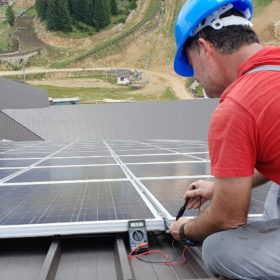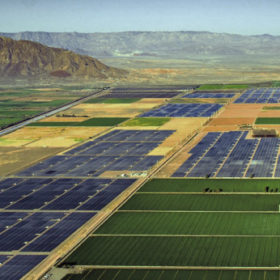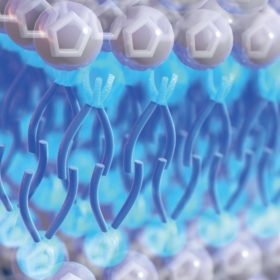MIT scientists develop a coating for perovskites
Researchers at the Massachusetts Institute of Technology have developed a transparent coating they successfully incorporated into a perovskite solar cell, increasing efficiency and stability. The group says with further improvements the material could be used as a simpler, less expensive alternative to widely used indium tin oxide as a transparent conductive material for a range of applications.
Live fast, die young: MIT study proposes use of 10-year panels
Research has found even short-lived, 10 to 15-year solar panels could provide enough return for bankable projects. The researchers believe panel costs, coupled with an industry mindset now fixed on the final solar energy price rather than costs per kilowatt installed, may open opportunities for PV products currently snubbed because of a short lifecycle.
The blackest black for more efficient solar cells
MIT scientists claim to have created a material 10 times more black than anything witnessed to date. It is said to be able to absorb more than 99.96% of incoming light and reflect 10 times less light than other superblack materials. The invention may be interesting for the development of black silicon PV technology and carbon nanotube-based solar cells.
The US tops 37.9 GW of large scale solar
That record figure of utility scale PV was under contract at the end of June with 8.7 GWdc under construction. However, installation levels fell slightly, year-over-year.
‘New and strange properties’ provide a boost to energy storage
MIT scientists have developed a class of liquid electrolyte with properties they say could open up new possibilities for improving the performance and stability of lithium batteries and supercapacitors.
Lowering emissions without breaking the bank in India
A combination of carbon pricing and a renewable portfolio standard for electricity companies in India will be more effective than either measure in isolation to help the nation meet its climate change targets, according to a study by MIT researchers.
‘Turbocharging’ silicon PV: MIT scientists scratch the surface of singlet exciton fission
Scientists at the Massachusetts Institute of Technology have developed a device they say could “turbocharge” a single-junction silicon PV cell, pushing the technology beyond its theoretical limit to efficiencies of 35% and higher.
MIT works to refine the flow of promising perovskites
Scientists at the Massachusetts Institute of Technology have developed an accelerated process for screening new perovskite compounds as they search for those with the potential to be used in high efficiency solar cells. According to MIT, the process speeds up the synthesis and analysis of new compounds by a factor of ten and has already highlighted two sets of materials worthy of further study.
US presidential hopeful calls for huge increase in renewables on public lands
Senator and 2020 candidate Elizabeth Warren has announced plans for a targeted expansion of renewable energy development on public lands along with a moratorium on new fossil fuel leases.
MIT develops ‘hybrid’ cathode for smaller, lighter batteries
Scientists at MIT have developed a new type of “hybrid” cathode for lithium batteries, which they say could increase their energy density beyond that of current commercial lithium-ion battery designs.






